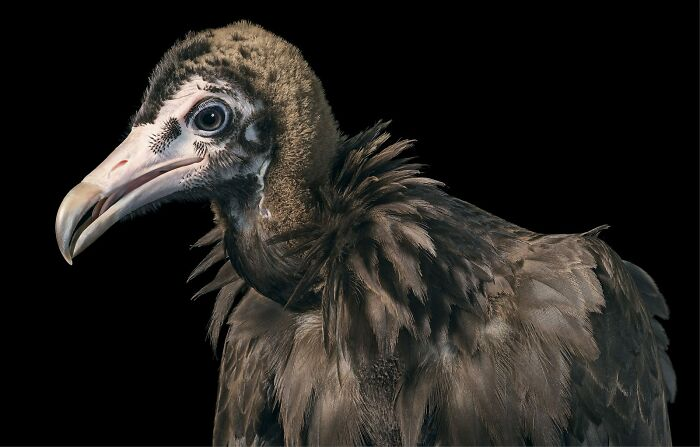Renowned photographer Tim Flach keeps a delightful company of three goldfish and two Burmese cats, Hunt and Blue. Despite having an inherent predator’s instinct, the feline duo accompanies Flach while he works on capturing striking animal portraits with the same care as any human model. With his exceptional ability to highlight the unique appearance of both wild and domesticated animals, Flach’s work stands out. While he has captured animals in their natural habitat, he also places them against a simple background to showcase their beauty. In this piece, we’re focusing on Flach’s breathtaking bird photographs. To explore his magnificent work in detail, take a look at his books: Endangered and More Than Human. The first bird we’re highlighting is the Himalayan Monal.
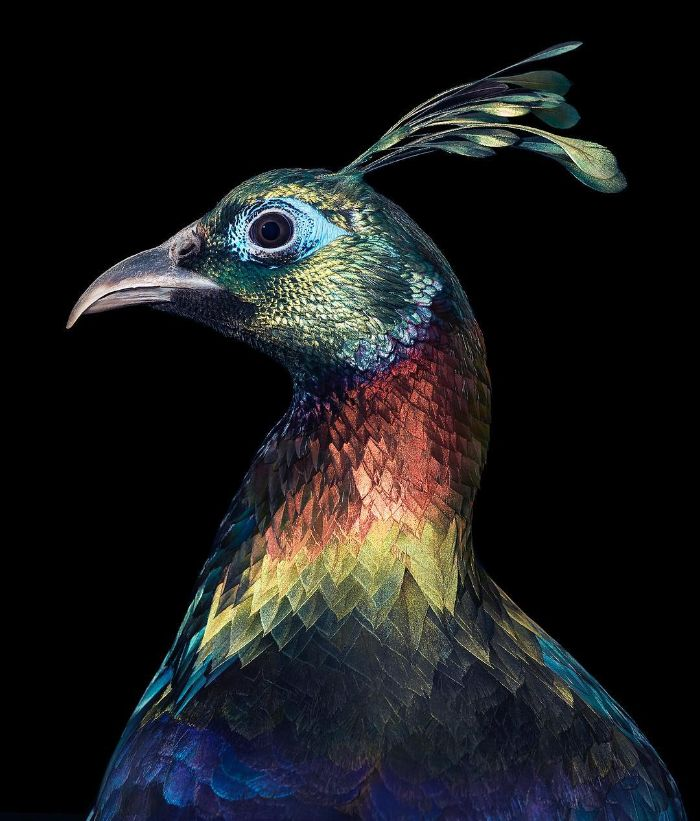
Managing numerous models is not just about artistic skills, but also requires organizational abilities. The photographer Flach devotes a significant amount of time to his photoshoots, and the duration varies depending on the project. If it is a commissioned project that involves domestic animals like cats or dogs, he collaborates with a wrangler or handler to ensure that everything aligns with the client’s and agency’s requirements. However, if it is a personal project, he follows a concept or an idea that an animal represents. Accessing these animals is a case-by-case situation, such as arranging permission and visas through a friend in Moscow to photograph endangered Saiga found in national parks near the Caspian Sea in Russia.
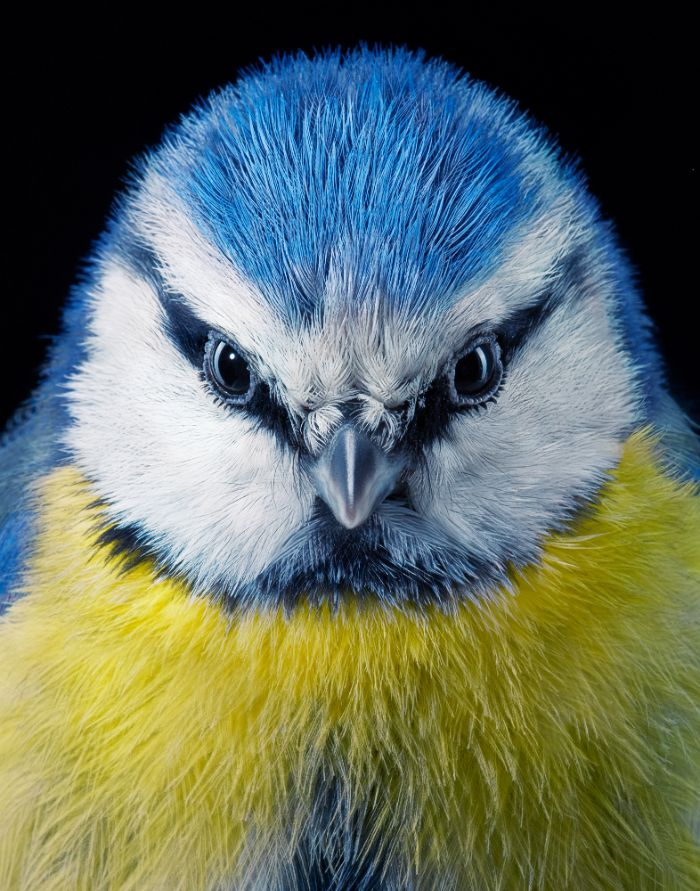
Blue Tits are a familiar sight at bird tables all across the United Kingdom. Recent studies have shown that people in Britain tend to put twice as much food in their bird feeders than their European counterparts. This overfeeding may be contributing to the evolution of longer beaks in some bird species. To capture stunning images of birds, it’s important to work closely with experts who understand their behavior. Photographer Flach is currently working on a book about birds and has teamed up with a knowledgeable producer who owns several birds. To gain access to rare specimens like fossils or exotic animals, Flach must often develop careful cases for why he needs access and convince museum staff that his work is worth the effort. One bird species that Flach has photographed is the Inca Tern.
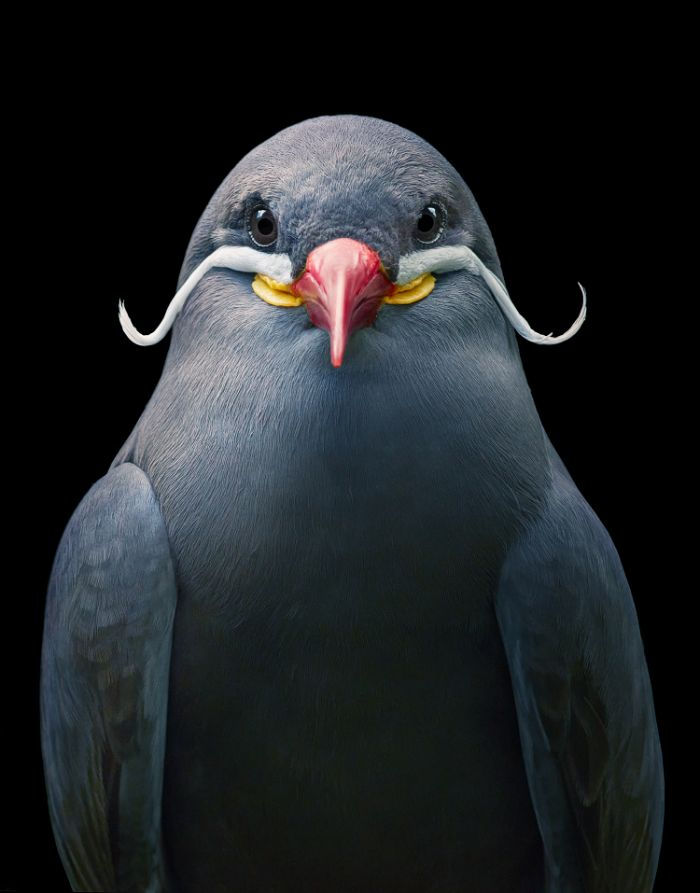
To me, the Peruvian Inca tern is like the Salvador Dali of birds. Its moustache, which indicates its immune system strength, is a key factor in courtship. Tim’s job as a photographer involves a lot of variety, especially when it comes to animal photography. Whether he’s diving with sharks or tracking down polar bears, each situation requires a unique approach. Most of the animals Tim photographs are untrained, including birds. Although some parrots are trained for shows, Tim prefers to capture his subjects in their natural habitats with a long lens and lots of patience. One bird that caught his eye was the Gouldian Finch.
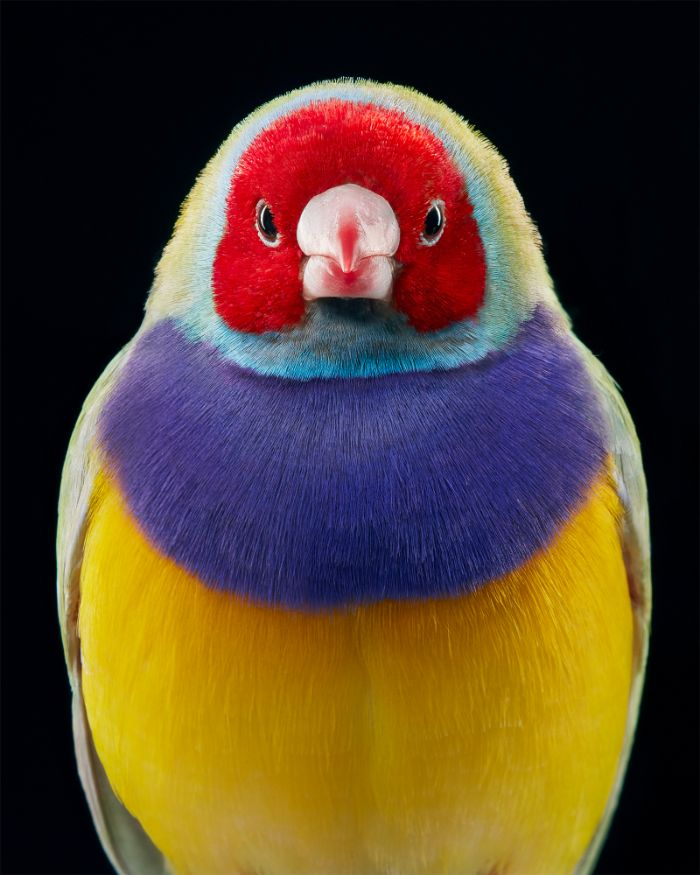
To me, the Gouldian finch from Australia stands out as one of the most vibrant and eye-catching finches out there. I was lucky enough to have a close encounter with one of these birds that even landed on my head a few times instead of staying on its perch.
When it comes to studio photography, however, things are quite different. Photographers typically use a specialized aviary that keeps the animal from seeing them, and even a turntable to get just the right angle. The level of control a photographer has can vary greatly.
Tim, the photographer, finds a sense of awe and wonder in capturing animals on film. You never quite know what will happen, and that’s part of the beauty of his work. He never forces the shot, but rather lets his subjects speak for themselves and leaves room for viewers to interpret the images in their own way.
As for the #5 Silver Laced Polish Chicken, well, I can only imagine how stunning it must be in person!
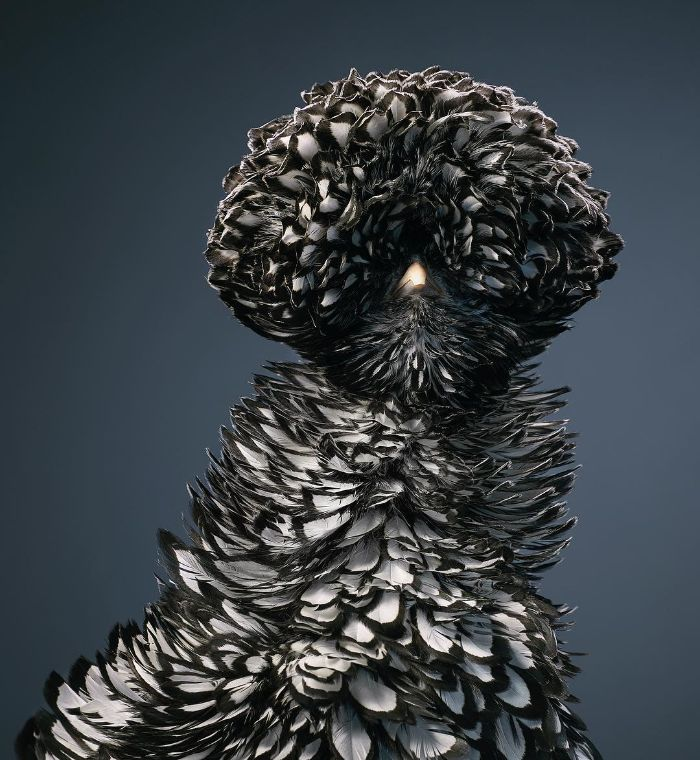
The Northern Red Cardinal is a type of bird that is widely known for its striking appearance. It has bright red feathers and a distinctive crest on its head. This bird is commonly found in the eastern United States and is a familiar sight to many people. The male bird is known for its beautiful singing voice, which is often heard throughout the day. The female bird is less colorful than the male, but still has a lovely appearance with her reddish-brown feathers. Overall, the Northern Red Cardinal is a beloved bird that brings joy and beauty to those who have the pleasure of seeing it.
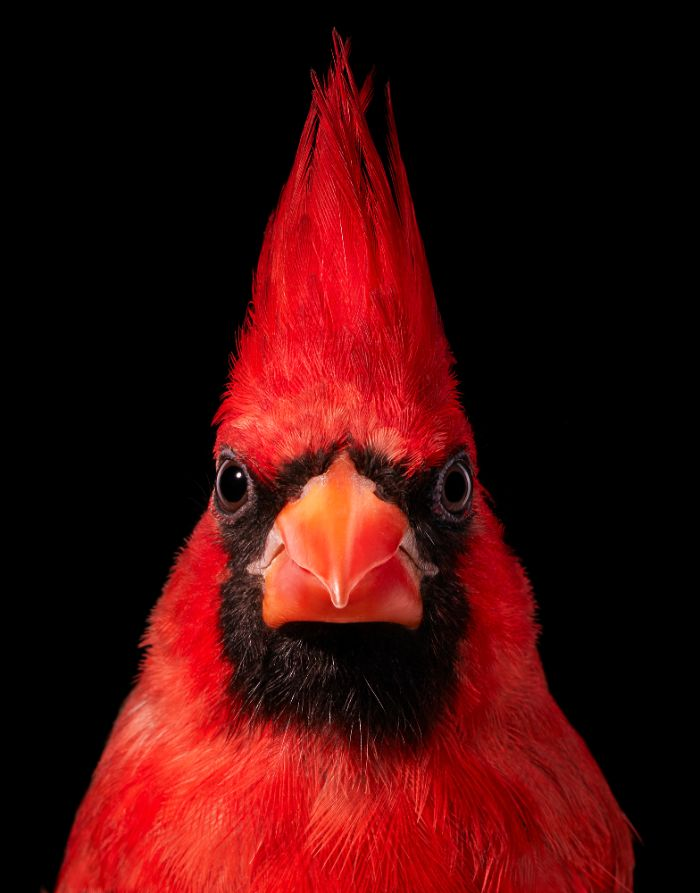
The Northern red cardinals are skilled singers who have the ability to create over a dozen different versions of their songs. This particular cardinal had a feisty personality, almost resembling a character from the popular game Angry Birds. Let’s move on to number seven, the Major Mitchell.
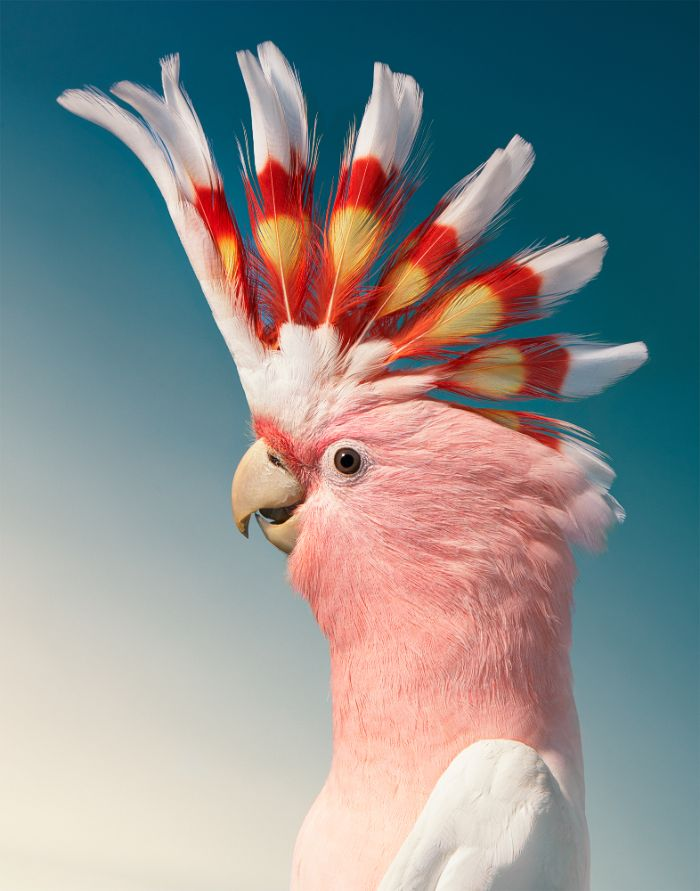
Cockatoos are easily distinguishable from other parrots due to their stunning crests. Despite their unique physical feature, they share a similar lifespan with humans, just like most parrot species.
Moving on to the Philippine Eagle…
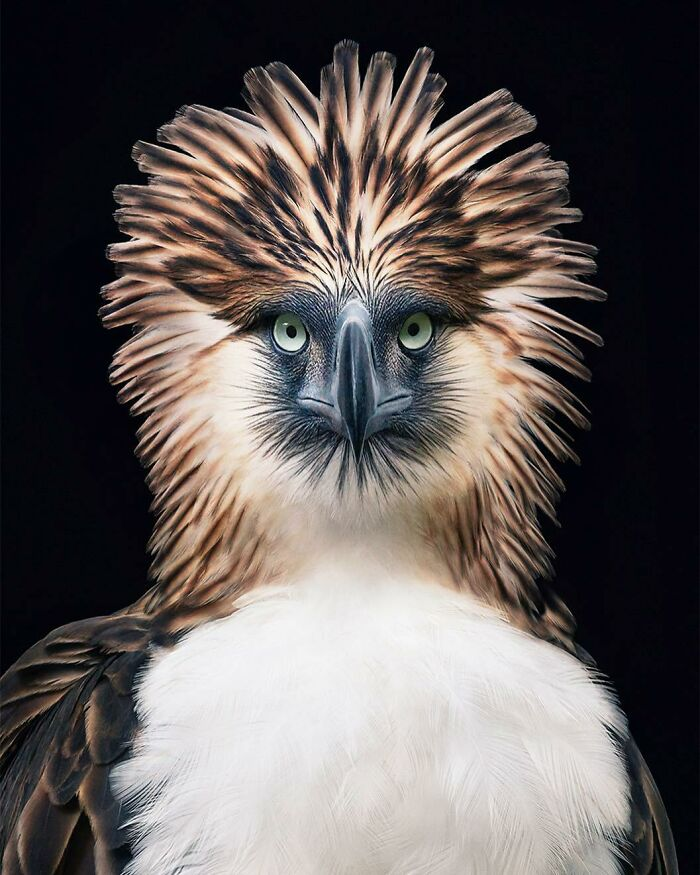
After scouring the Mountains on the Philippine islands for days, I finally managed to capture a photo of the majestic Philippine Eagle at a rescue sanctuary. Its impressive wingspan of 2 meters makes it one of the largest eagles in the world, and it is also the national bird of the Philippines. Sadly, this magnificent creature is critically endangered according to the International Union for Conservation of Nature. Moving on to another bird on my list, the Jacobin Pigeon takes the ninth spot.
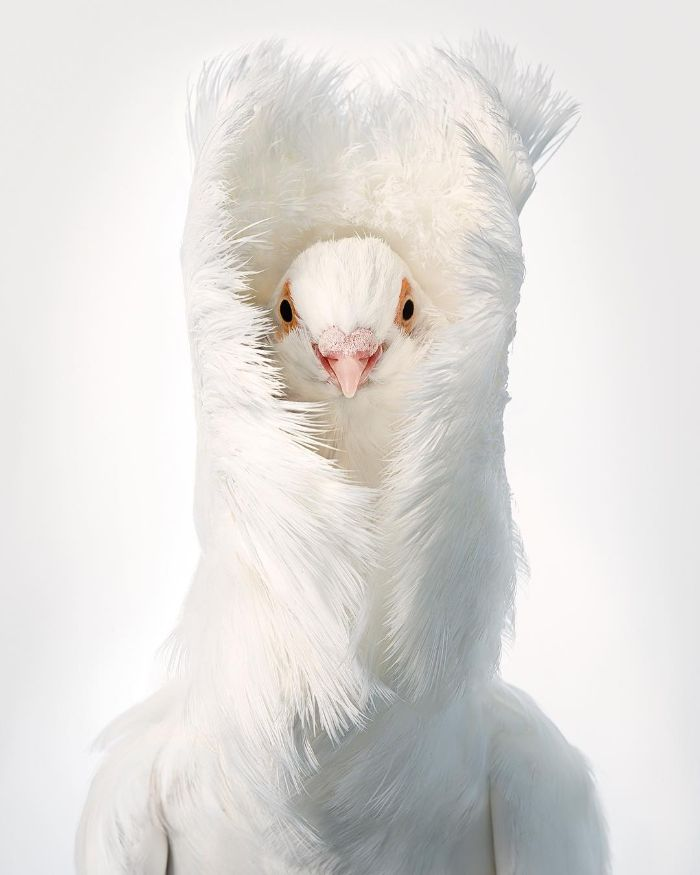
The Jacobins, which hail from India, are a well-established pigeon breed that has been around for centuries. Their introduction to Europe in the 16th century was a turning point in their transformation into the elegant show birds we admire today.
#10 Longtail Broadbill
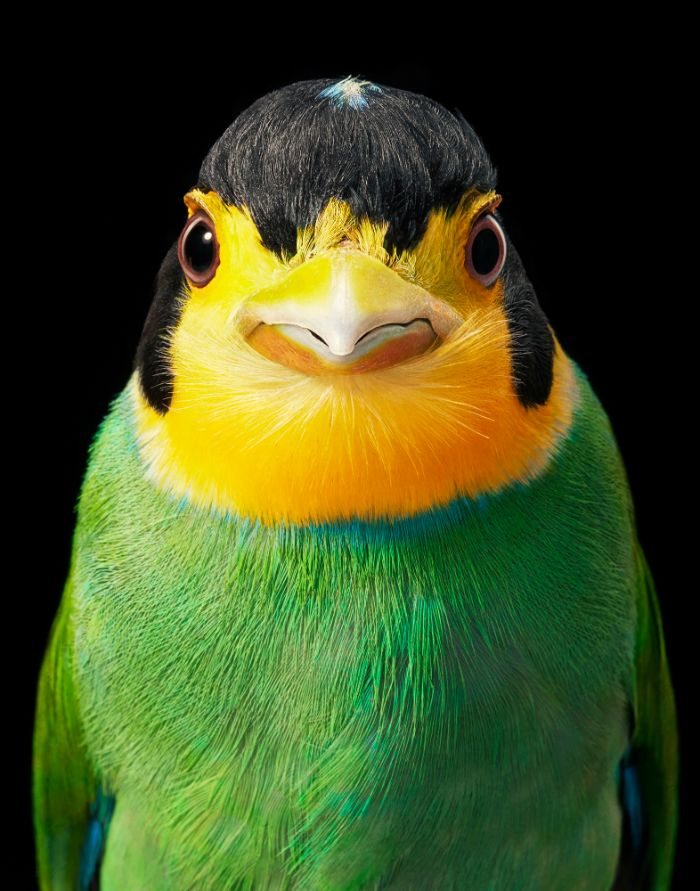
The Himalayas to South East Asia is the area where the long-tailed broadbill can be found. To me, it looks like a fighter pilot, but many people say that it resembles Elvis due to its helmet-like black cap and smooth blue crown patch. Another bird in the list is the #11 Black Jacobin Pigeon.
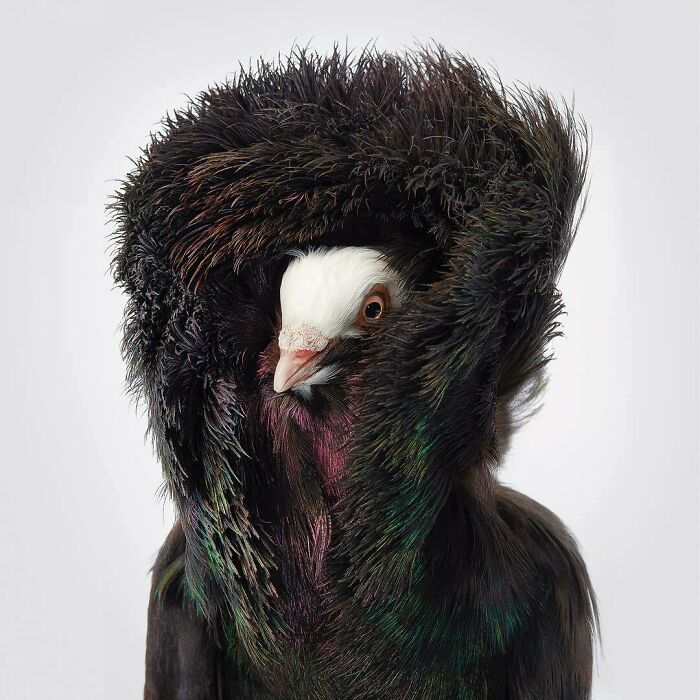
The Victoria Crowned Pigeon has earned its European name due to the peculiar appearance of its feathered hood, which bears a striking resemblance to the attire worn by the Jacobin order of monks. Alternatively, some people have compared the bird’s unique feature to that of a woman donning feathery clothing. This fascinating creature definitely stands out from the rest!
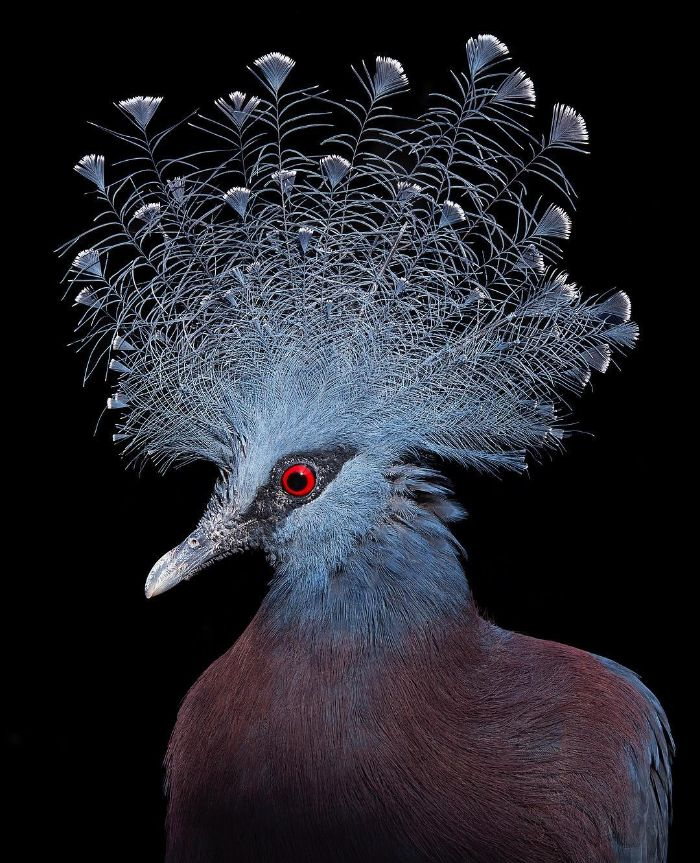
The Victoria Crowned Pigeon, which can be spotted in mainland New Guinea, is the biggest of all pigeon species known to us today. It’s interesting to note that the lone member of the pigeon family that could possibly be bigger than this bird is the extinct Dodo. Now, let’s move on to discussing the Toco Toucan.
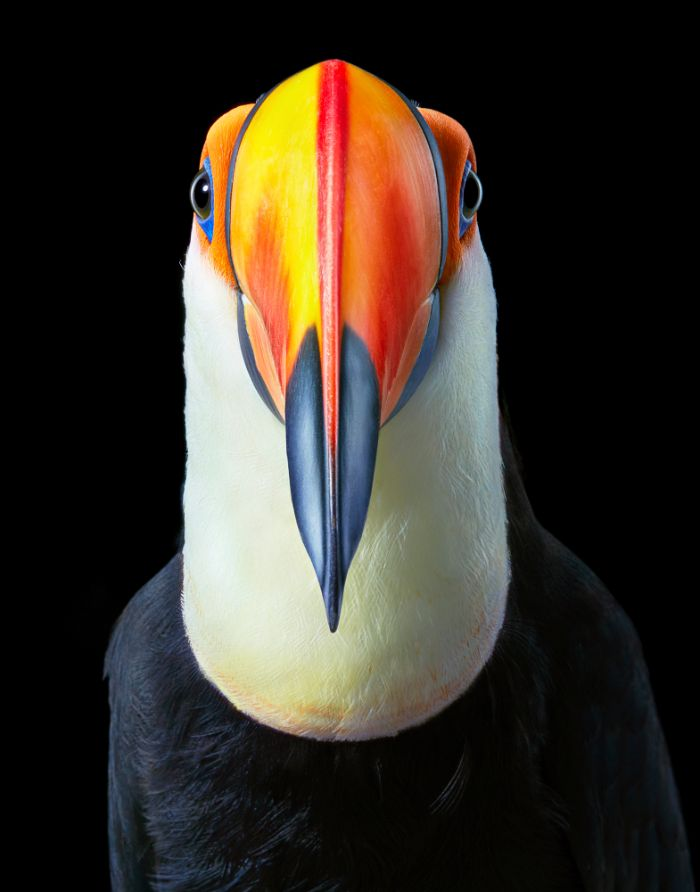
The Toco Toucan has a bill that’s proportionally the largest among birds. Interestingly, this bill can be used to regulate heat distribution, much like how elephants use their ears. When sleeping, these birds can lower heat loss by tucking their bill under their wing.
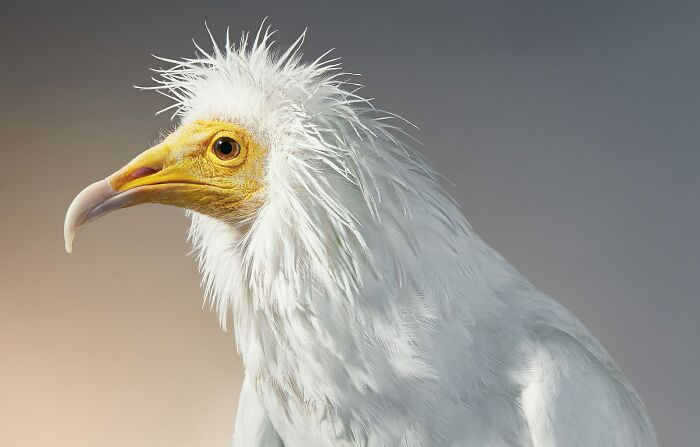
The Red Splash Jacobin Pigeon, which is number 15 on our list, is a beautiful bird that is sure to catch your eye. This pigeon is known for its unique red and white coloring, which creates a striking splash effect on its feathers. With its elegant appearance and graceful movements, the Red Splash Jacobin Pigeon is a popular choice among bird enthusiasts. So, if you’re looking for a stunning addition to your collection, this pigeon is definitely one to consider.
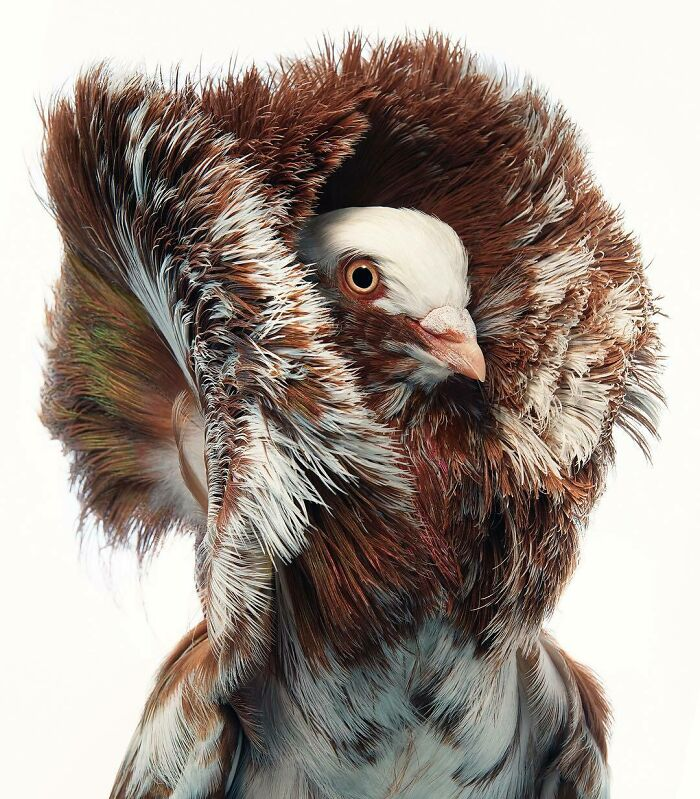
The Jacobin pigeon is a majestic bird that has been owned by prestigious individuals such as Charles Darwin and Queen Victoria. Its distinct feature is the hood of feathers surrounding its head, which gives it its name. Another stunning bird is the Andean Cock of the Rock, ranked at number 16.
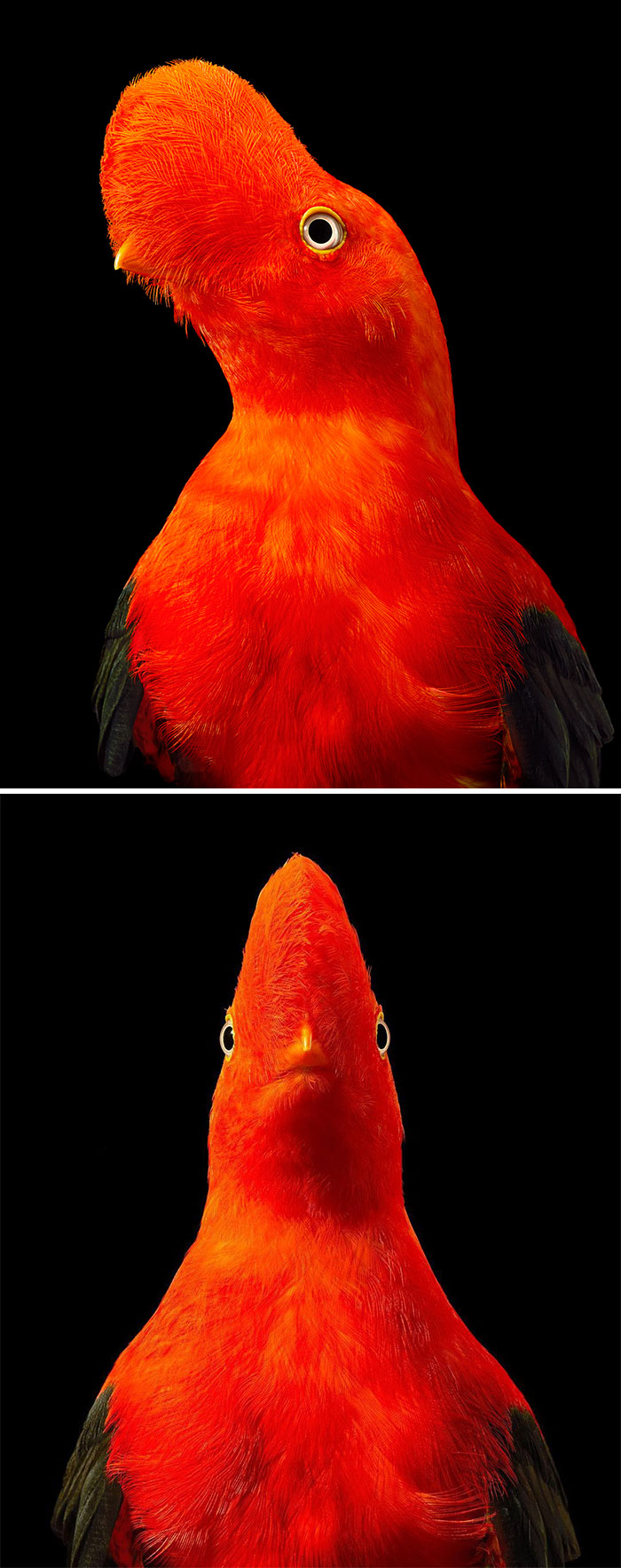
Male Cock-of-the-rock engage in a unique behavior known as “confrontation displays” during mating season. This behavior can be described as a dance-off with other male birds, becoming more intense as they compete for the attention of a female.
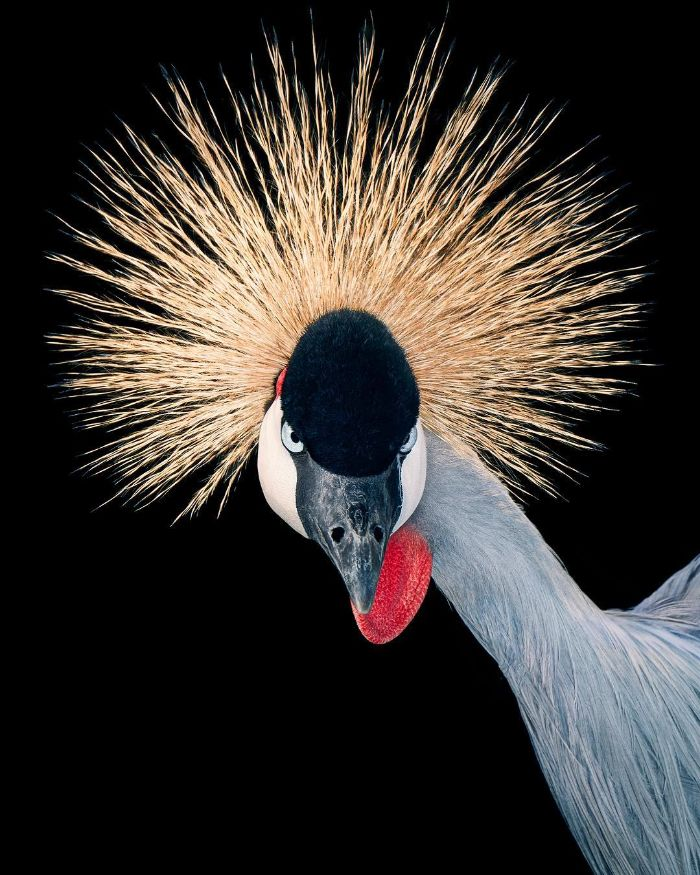
The Grey Crowned Crane is known for its irritable nature and strong beak that can cause harm. This bird is native to Southern and Eastern Africa. During my encounter with one, it began to peck at my camera and appeared aggressive towards me. I quickly moved away to avoid any potential harm. #18 Shoebill
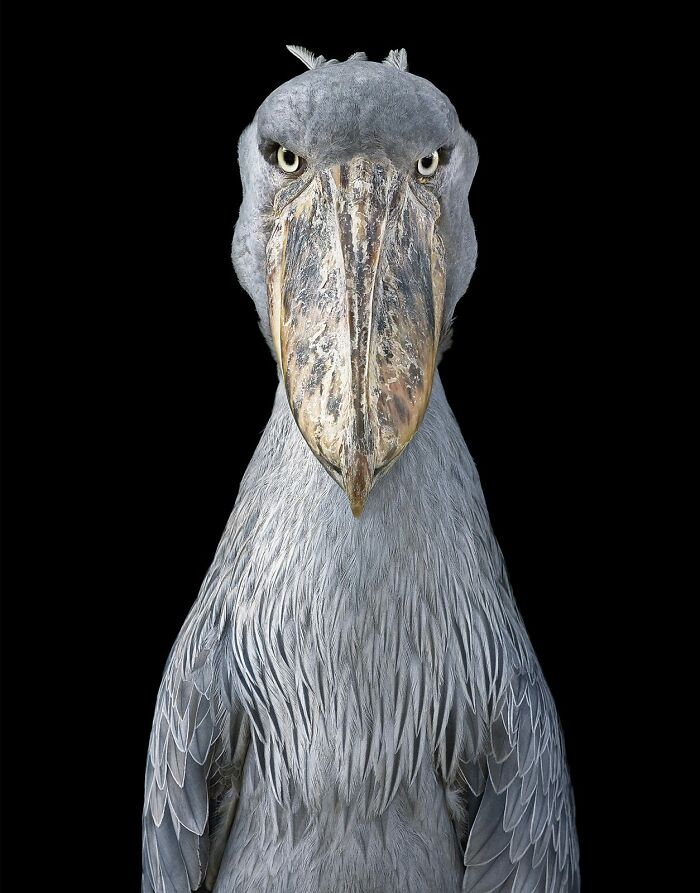
Let’s talk about the majestic King Vulture today! This bird is definitely a sight to behold with its impressive wingspan and vibrant colors. Its head and neck are covered in bright, colorful feathers, while its body is mostly white. The King Vulture can be found in Central and South America, where it soars through the skies looking for carrion to feed on. Despite its intimidating appearance, this vulture is actually quite docile and will usually only attack other animals if it feels threatened. So next time you’re in the rainforest, keep an eye out for this regal bird soaring up high!
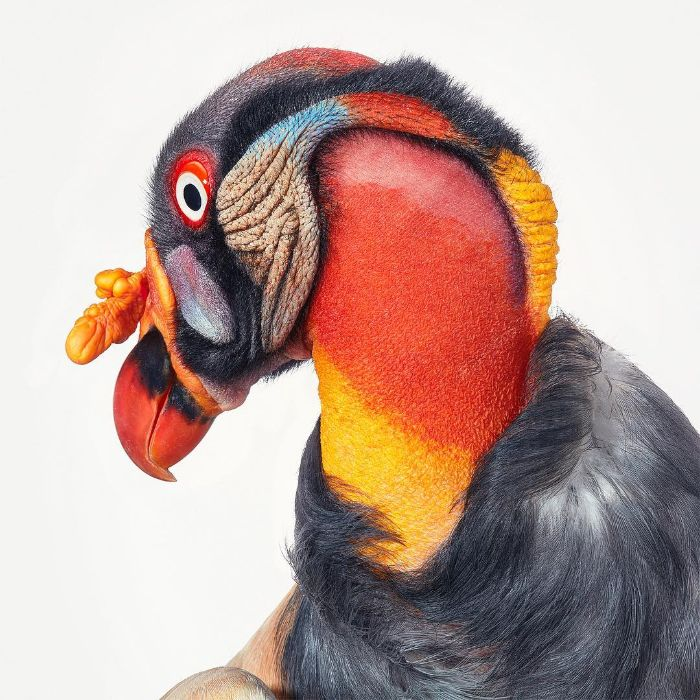
Long ago, the King vulture held great significance to the Mayan people as they believed it was the link between gods and humans. Surprisingly, this vulture species can be found thriving in the lush forests of South America, all the way up to Mexico. And for bird enthusiasts out there, don’t forget to check out the unique and beautiful Vultrurine Guineafowl Hen, which is also worth admiring.
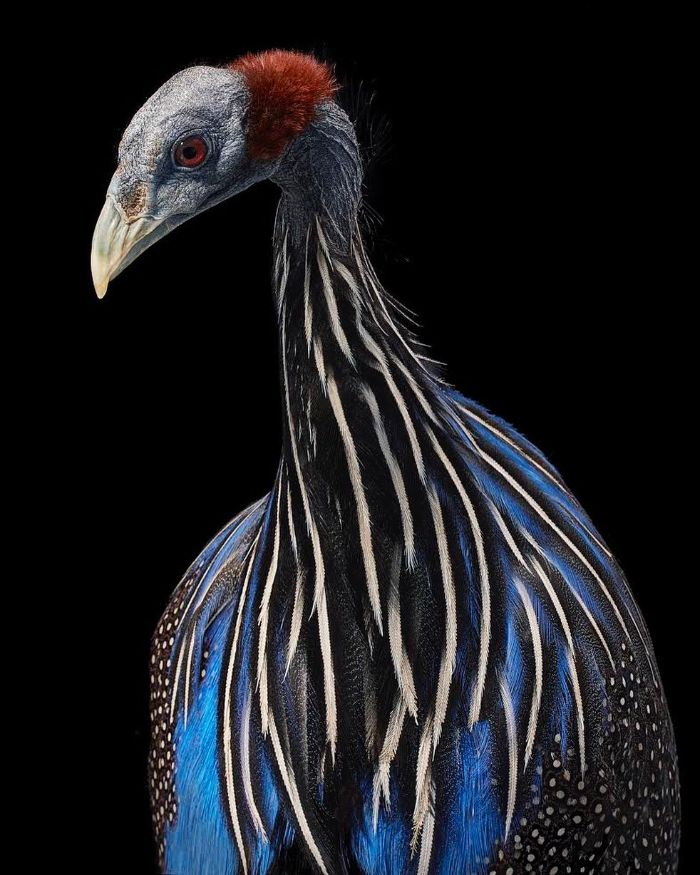
Did you know that Vultrurine Guineafowl hens are capable of laying up to 40 eggs within a season? It’s no wonder these birds aren’t considered endangered! They’re typically found in the semi-arid regions of Eastern Africa where they spend their days running through the bushes instead of taking flight.
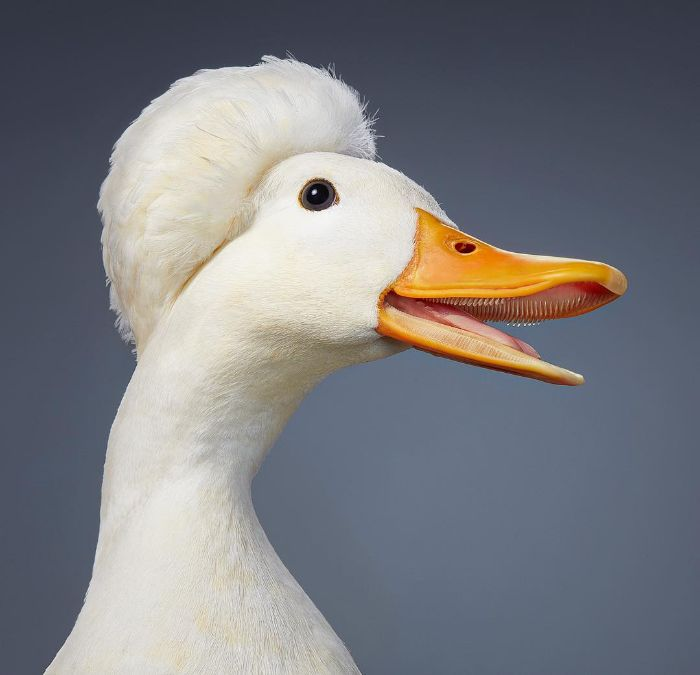
Meet the Crested Miniature duck, a common breed of domestic ducks. They have unique comb-like structures near their beak that help them sift through mud and water to find their favorite food, insects. These ducks are not only adorable but efficient foragers as well. Let’s move on to the next bird on our list, the Nicobar Pigeon.
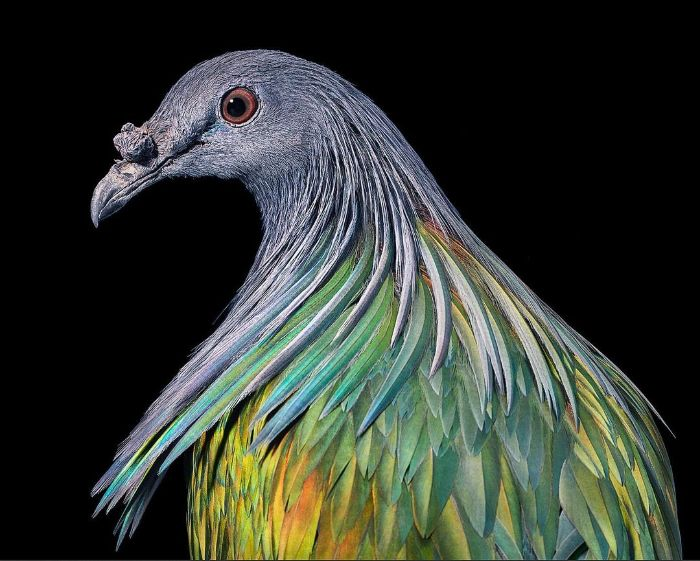
The Nicobar Pigeon, which is closely related to the extinct Dodo, is facing a serious threat of extinction due to being hunted for food and their gizzard stones being used in jewellery. They are known for their nomadic nature, moving from the Nicobar islands in India to other coastal areas in Southeast Asia. Another interesting bird species is the Bearded Tit.
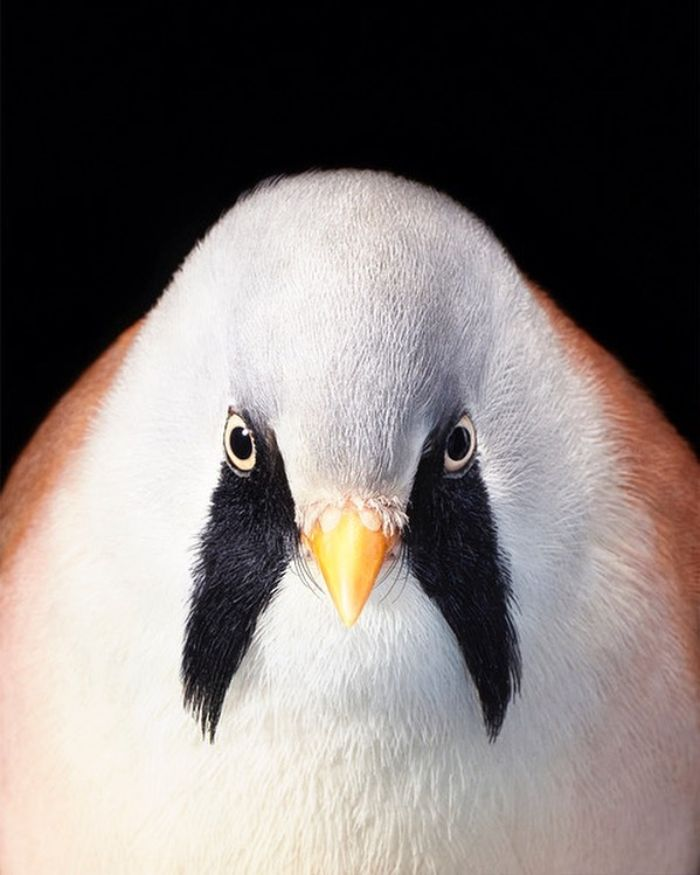
The bearded tits are a unique type of British songbird that remain in reed beds throughout the year for breeding purposes. Unfortunately, their numbers are limited due to habitat restrictions, with just under 600 breeding pairs found in Britain. The low nesting habits of these birds make it challenging for them to thrive. Interestingly, a group of these songbirds is called a ‘banditry’.
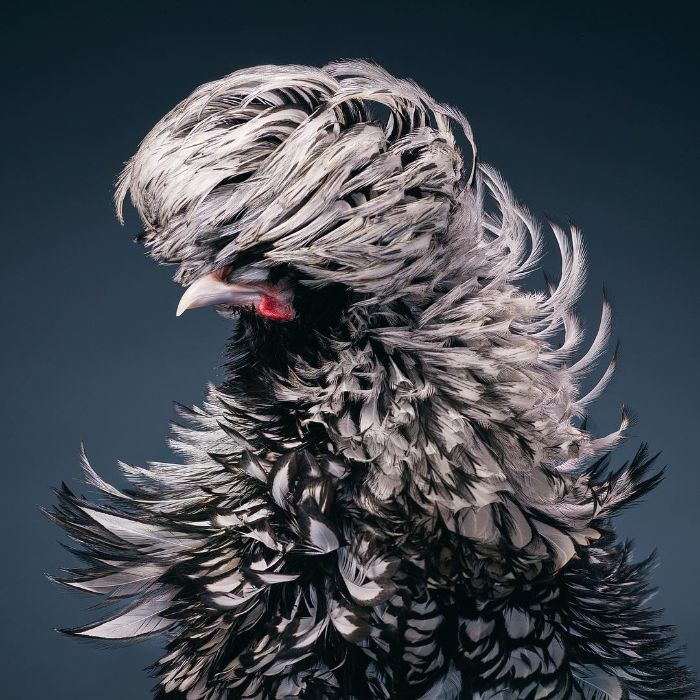
The Silver-Laced rooster has become a popular representation of the medieval Polish country gentleman in literature and art. Recently, I had the opportunity to capture a photo of this bird at the Federation Championship Poultry Show. Additionally, the #25 Hooded Vulture is also a noteworthy species worth mentioning.
